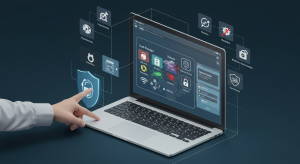Software on demand refers to computer applications that are delivered as a service via the Internet. This type of software is also referred to as on-demand software, SaaS (Software-as-a-Service) and Applications-as-a-Service. Software on demand is a new paradigm for the industry that provides the primary benefit of lowered operational and capital expenses for enterprise information technology services. When an organization decides to implement software on demand as a solution for their enterprise software needs, internal information technology services can become more efficient. This is brought about since IT personnel are no longer required to focus on the installation, maintenance and support of enterprise software and the hardware that supports such software. The efficiency gains delivered by software on demand frees up IT personnel for the more important task of managing IT resources as a strategic tool to optimize their business operations.
CHARACTERISTICS
There are several key characteristics at the foundation of the software on demand or SaaS model of software delivery. These characteristics and how they differ from the traditional software model )on-premise) are as follows:
- Centralized Hosting / Delivery – this characteristic of software on demand differs from the traditional model of software delivery that requires the added operational overhead of providing software to users through different distribution channels.
- Uniform Platform for Delivery – this characteristic of software on demand differs from the traditional model of software delivery which requires different software packages for different operating systems and operating platforms. With software on demand, all SaaS solutions function on a single platform (the Internet) with a uniform type of client interface (a web browser).
- Open Collaboration / Sharing – this characteristic of software on demand differs from the traditional model of software delivery which requires IT administrator management of user permission profiles for shared access to computing resources. With SaaS, platform tools such as automated user provisioning and self service account management provides SaaS consumers with the necessary tools to control how and when they share tasks, data and information with other users who are internal or external to their organization.
There are many other important characteristics of software on demand that are related to the development, management and marketability of each SaaS solution an ASP (application service provider) or ISV (independent software vendor) has to offer to consumers. These characteristics include (but are not limited to): SaaS Architecture (e.g. Service Oriented Architecture), SaaS Integration (e.g. Web Application Interfaces ) and SaaS Development (e.g. agile software methodologies)
This page is an archive. To learn more about archive pages click here
The responses below are not provided, commissioned, reviewed, approved, or otherwise endorsed by any financial entity or advertiser. It is not the advertiser’s responsibility to ensure all posts and/or questions are answered.


